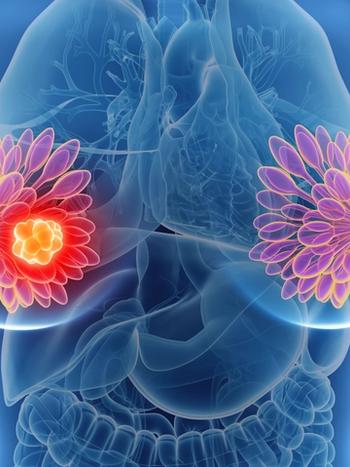
Oncology NEWS International
- Oncology NEWS International Vol 11 No 1
- Volume 11
- Issue 1
Adjuvant Anastrozole Superior to Tamoxifen in Huge ATAC Breast Cancer Trial
SAN ANTONIO-In the largest breast cancer trial ever conducted, anastrozole (Arimidex) emerged the winner in a head-to-head comparison with tamoxifen (Nolvadex) in early-stage breast cancer. The impressive results, in both efficacy and tolerability, were reported at the 24th Annual San Antonio Breast Cancer Symposium (abstract 8).
SAN ANTONIOIn the largest breast cancer trial ever conducted, anastrozole (Arimidex) emerged the winner in a head-to-head comparison with tamoxifen (Nolvadex) in early-stage breast cancer. The impressive results, in both efficacy and tolerability, were reported at the 24th Annual San Antonio Breast Cancer Symposium (abstract 8).
The findings were the first results from the large ATAC trial (Arimidex and Tamoxifen Alone or in Combination), being conducted in 380 cancer centers in 21 countries. The study involves 9,366 postmenopausal women with operable breast cancer, randomized after surgery and primary chemotherapy to anastrozole 1 mg daily, tamoxifen 20 mg daily, or the combination.
Professor Michael Baum, of University College Hospital, London, presented the first data on recurrence-free survival and incidence of contralateral breast cancer, based on a median 33 months follow-up and median treatment duration of 31 months.
The analysis showed that 317 of 3,125 women in the anastrozole group had a relapse of their breast cancer or died, compared with 379 of 3,116 women in the tamoxifen group (P = .0129), representing a 17% reduction in the risk of recurrence in favor of anastrozole. In women with hormone-sensitive tumors, the reduction in risk of recurrence was 22% with anastrozole (P = .0054).
Anastrozole also reduced the risk of contralateral breast cancer by 58% over tamoxifen (P = .0068), "providing an additional reduction of almost 60% over the 50% already produced by tamoxifen," Dr. Baum said.
There was no additional efficacy benefit with the combination over tamoxifen alone. In the combination group, 383 of 3,125 women had a relapse or died. Dr. Baum said the trials’ endocrinologists speculate that "in a very low estrogen environment provided by anastrozole, tamoxifen is seen as an estrogen agonist, rather than antagonist," thus counteracting a treatment effect.
Aman Buzdar, MD, principal US investigator for the study, described the outcome as extremely important. "Now, after 20 years, tamoxifen’s established benefits in early breast cancer are being challenged," said Dr. Buzdar, of M.D. Anderson Cancer Center.
He noted that although tamoxifen is a very effective drug, it has side effects. "The goal of research in this area is to improve that side effects profile." He called anastrozole "a drug that has better anticancer activity with fewer side effects than tamoxifen. Now, 17 out of 100 patients who, in spite of tamoxifen therapy, would have recurred will remain disease free because they got anastrozole."
Anastrozole works by reducing circulating estrogen in postmenopausal women. Selective inhibition of aromatase by anastrozole suppresses the formation of estrogen and hence reduces the stimulatory effect of estrogen on breast tissue. Tamoxifen selectively blocks estrogen from stimulating breast cancer cells by binding to the estrogen receptor.
In the ATAC study, anastrozole produced significantly fewer side effects than tamoxifen, including fewer cases of endometrial cancer, fewer thromboembolic events, less vaginal bleeding and discharge, and fewer cerebrovascular events.
Deep-vein thrombosis was reported in 1.7% of tamoxifen patients, compared with 1% of anastrozole patients; endometrial cancer occurred in 0.5% and 0.1%, respectively; and vaginal bleeding occurred in 8.1% and 4.5%, respectively. Hot flashes and weight gain were also slightly more common with tamoxifen.
More Bone Fractures
Anastrozole was associated with significantly more bone fractures (primarily of the wrist) and musculoskeletal pain. The 2.1% absolute increase in fractures (5.8% vs 3.7% for tamoxifen) was of particular concern to several investigators who commented on the findings.
Paul Goss, MD, of Princess Margaret Hospital, Toronto, for example, presented a poster (abstract 132) showing that another aromatase inhibitor, exemestane (Aromasin), was not associated with bone loss in a randomized controlled study in ovariectomized rats.
Dr. Goss commented about the ATAC results, "This is very real and compelling clinical data, not just a measurement of bone mineral density. A 2% increase in fractures is a serious toxicity."
Dr. Baum also expressed concerns about bone loss, noting that a complete risk/benefit analysis is still pending in ATAC. "We need longer follow-up and attention to bone mineral density and cognitive function. These are concerns with long-term depletion of estrogen," he said. "But I happen to think this [bone loss] is something we can handle quite well." Several other breast cancer investigators agreed, noting that a bisphosphonate should handle this problem.
Articles in this issue
almost 24 years ago
ODAC Sends Mixed Message on New Gliadel Wafer Indicationabout 24 years ago
ONCC Certification Test Results Are Announcedabout 24 years ago
Rituximab Ups Survival in Aggressive and Indolent NHLabout 24 years ago
Topotecan Used in Aggressive Front-Line Therapy for SCLCabout 24 years ago
Depsipeptide Shows Activity in T-Cell Lymphomaabout 24 years ago
FDG-PET Useful in Newly Diagnosed and Recurrent NSCLCabout 24 years ago
ODAC Backs Adding HER-2 DNA Test to Herceptin Package Insertabout 24 years ago
FDA and VA Plan Joint AIDS Studyabout 24 years ago
Breast Conservation Increases With On-Site Radiation Unitabout 24 years ago
Washington State Hikes Cigarette TaxNewsletter
Stay up to date on recent advances in the multidisciplinary approach to cancer.

























































































